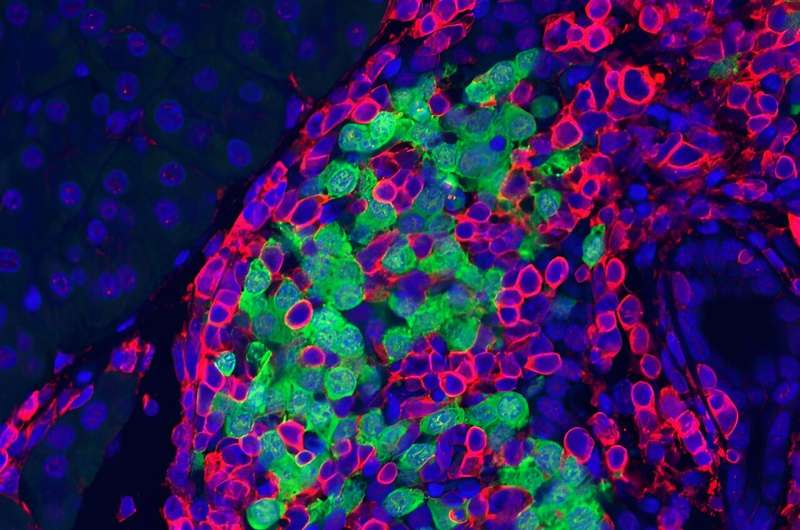This article has been reviewed according to Science X's editorial process and policies. Editors have highlighted the following attributes while ensuring the content's credibility:
fact-checked
peer-reviewed publication
trusted source
proofread
New model of type 1 diabetes: RNA editing disruption mimics early stage disease with no involvement of virus

A recent study published in Cell Metabolism by researchers at the Hebrew University-Hadassah Medical School, Bar-Ilan University and Vanderbilt University has developed a new paradigm for early stages of type 1 diabetes (T1D), suggesting a new etiology that does not involve viral infection.
T1D is an autoimmune disease, affecting almost 10 million people worldwide, whereby the immune system attacks and destroys insulin-producing beta cells in the pancreas. In the absence of insulin, glucose concentration in blood increases, leading to a host of complications. Patients, typically diagnosed in childhood, require life-long treatment with insulin.
A leading model for why T1D develops suggests that the disease is initiated by viral infection, which in genetically susceptible individuals causes an autoimmune attack on beta cells. This is supported by extensive information, for example the identification of an anti-viral response in early stage disease.
The implications of this view are vast; for example, it suggests the use of anti-viral therapy for preventing T1D. However, despite decades of searching, a causal virus has not been found.
The new research, led by Prof. Yuval Dor, Dr. Agnes Klochendler and MD/Ph.D. students Ehud Knebel and Shani Peleg, introduces a new model for how T1D may develop, explaining the anti-viral response but with no need for viral infection.
The team studied a process called RNA editing, which acts to dismantle endogenous RNA molecules that fold on themselves, forming double-stranded RNA. Since double-stranded RNA is a hallmark of many viruses, such molecules can often be recognized, mistakenly, by the immune system as an indication of an invading virus, and trigger a detrimental immune response.
The researchers found that when RNA editing is defective in pancreatic beta cells, the body mounts a massive inflammatory attack, destroying beta cells and eventually leading to diabetes, with feature that strikingly resemble T1D.
Moreover, they discovered that high levels of blood glucose boost the inflammatory attack, suggesting a vicious cycle whereby beta cell destruction leads to diabetes, which further drives destructive inflammation. Strikingly, independent work has recently discovered that genetically inherited defects in RNA editing predispose people to multiple auto-inflammatory conditions, including T1D, suggesting relevance to actual human T1D.
Prof. Yuval Dor stated, "Our research presents compelling evidence that disruption of RNA editing within beta cells can trigger an inflammatory response resembling early-stage type 1 diabetes. This offers a new view for how T1D may develop, with implications for prevention and treatment strategies."
Dr. Agnes Klochendler added, "Identifying a link between natural double stranded RNA in beta cells, inflammation and diabetes opens a new perspective on T1D: a paradigm of 'the enemy within,' not necessitating external viral infection as the triggering event for this disease."
More information: Udi Ehud Knebel et al, Disrupted RNA editing in beta cells mimics early-stage type 1 diabetes, Cell Metabolism (2023). DOI: 10.1016/j.cmet.2023.11.011















